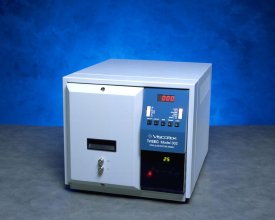Jan 15 2008
Analytica 2008 has been selected by Viscotek as the venue to unveil its latest technological and applications advances for multi-detector characterisation of polymers, proteins, biomolecules and nanoparticulate materials.
Visitors to the Viscotek exhibit on Booth 383, Hall A1 will be able to see and discuss, with technical specialists, a new generation of the popular Model 802 Dynamic Light Scattering (DLS) instrument - the Model 802DAT. Traditionally laboratories faced with analysing higher concentration samples, such as protein crystallography scientists, protein NMR scientists, emulsions or nanoparticle researchers, have found traditional light scattering instruments limited both in terms of sensitivity and resolution. To address these deficiencies Viscotek developed as an option for its new generation system - Dual Attenuation Technology. Dual Attenuation Technology (DAT) is a unique technique that controls the level of light entering the sample as well as controlling scattered light going to the detector. In this way, for the first time, researchers are able to work at the optimum conditions for the laser and detector irrespective of sample type. Designed for laboratories that need a complete understanding of how their natural or synthetic macromolecule behaves in solution the Model 802DAT sets a new standard for superior sensitivity, resolution, accuracy and sampling versatility compared to any other light scattering instrument currently available.

Incorporating Viscotek's patented Single Mode Fibre (SMF) optical detection, unique Dual Attention Technology (DAT) and independent temperature control of microplate and sample the HorizonDLS™ High-Throughput DLS plate reader sets a benchmark for automated biomolecular characterisation. The HorizonDLS™ delivers the same unmatched sensitivity on ultra low sample volumes as the acclaimed Model 802 DLS, but automatically, from the entire plate or selected wells, with no user interaction required. After manual or robotic placement of a prepared microplate into the temperature controlled instrument - intuitive OmniSIZE™ software then automatically makes the measurements according to the user programmed acquisition sequence and the results are displayed in seconds. A complete size distribution of an entire microplate can be automatically accomplished in just minutes. The HorizonDLS™ uniquely delivers both productivity and performance to a broad range of applications including screening of aggregates prior to protein crystallisation, monitoring size and aggregation as a function of varying solution conditions, buffer optimisation and characterisation and screening biotherapeutics for self-association.
For polymer, biopolymer and protein scientists visiting the show Viscotek will display its market leading Triple Detector Array (TDA™) and popular GPCmax™ systems.
The Viscotek TDA™ sets the standard for GPC/SEC technology and is the preferred method for characterising natural and synthetic macromolecules. The TDA™ employs a concentration detector, viscometer and light scattering detector acting in concert, with each detector providing complimentary but different information. In a single GPC/SEC experiment using the TDA™ you can obtain absolute Molecular Weight, Molecular Size, Intrinsic Viscosity, conformation and molecular structure information. The GPCmax™ is the world's first integrated pump, autosampler and degasser module specifically designed for GPC/SEC applications. It mates seamlessly with Viscotek's Triple Detector Array or a simple concentration detector to form a complete GPC/SEC system.
Founded in 1985, Viscotek is the global leader in GPC / SEC detectors, software and systems for the characterisation of polymers, proteins and nanoparticles. Launched in 2005 Viscotek's innovative and growing DLS instrument range has been widely acclaimed by laboratories around the world especially those specialising in biomolecular discovery, development and delivery, protein-protein interactions, protein conformation analysis and measurement of the stability and size of lipids and conjugates.